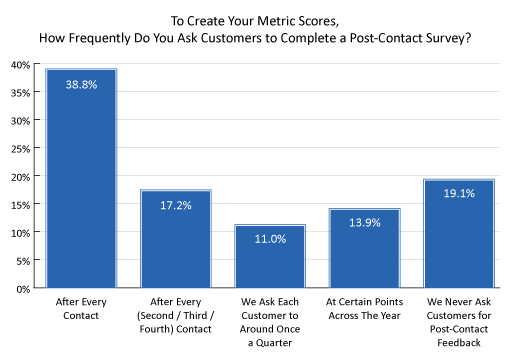25th September 2023

Post call surveys have become a key tool for contact centres seeking to enhance customer experience and optimize service performance.
These surveys provide businesses with valuable real-time feedback, allowing them to make data-driven decisions to improve interactions.
In this article, we’ll explore what these surveys are, who uses them, their benefits and limitations, and best practices for implementation.
A post call survey (also known as a post-contact survey or an after-call survey) is designed to gather immediate feedback from customers about their experience during the call.
It typically includes questions that assess service quality, the helpfulness of the agent, and overall satisfaction.
These surveys can be delivered via automated phone systems, emails, SMS, or web links, and often feature both rating scales and open-ended questions to gather quantitative and qualitative feedback.
Additionally, many post call surveys are integrated with CRM systems, linking survey results to specific customer interactions for more personalised insights. The goal is to not only measure satisfaction but also identify areas for improvement in service delivery.
Post call surveys are commonly initiated by departments that focus primarily on the customer experience, such as call centres and customer support teams.
These teams are responsible for directly engaging with customers, handling inquiries, and resolving issues, making their feedback essential for assessing service quality and overall performance.
The surveys offer a structured way to gather this feedback, enabling companies to evaluate how well their service teams are meeting customer expectations.
The insights gathered serve multiple purposes, including:
This includes working out customer satisfaction (C-SAT) scores to show how well the organization is performing, as well as determining NetPromoter Scores to track customer loyalty.
Surveys provide a direct channel for customers to express their opinions and provide feedback on their experiences.
Data collected from these surveys helps organizations identify patterns and trends in customer interactions, allowing them to make informed improvements.
By actively seeking feedback, companies demonstrate their commitment to listening to customers and addressing their concerns.
Post call surveys also help in evaluating the effectiveness of frontline agents and identifying areas for training and development.
As Jennifer Passini at NICE elaborates in our What Is an After-Call Survey? article, “For contact centre supervisors, after-call surveys are also helpful in improving overall performance for that touchpoint, as they highlight the metrics most important to customer satisfaction and areas for improvement to guide coaching and training for agents.”
In a proactive organization, data and responses from post call surveys are analysed to extract meaningful insights.
These insights help businesses understand pain points, strengths, and areas of opportunity within their customer service operations.
The data can also be used to benchmark performance, track improvements over time, and guide strategic decision-making.
For some, however, post call surveys are merely a tick-box exercise and the opportunity is lost to fully utilize these insights to improve the customer experience.
For advice on how often companies should seek customer feedback, read our article: How Often You Should Seek Customer Feedback
Here are a few key pros and cons to be aware of when running post call surveys:
The optimal time to send the survey is immediately after the customer interaction. The experience is fresh in the customer’s mind, ensuring that their responses are accurate and reflective of their emotions during the call.
However, there’s some debate around this, as we learnt on our visit to the ManyPets contact centre in Birmingham (UK):
“The ManyPets team have found that surveying a customer immediately after a call is not always reflective of the whole experience, as they have yet to see the agreed outcomes be delivered.
Instead, they send an email survey within 24 hours of the conversation, so the customer has chance to reflect on the whole experience – when the agent has done what they said they’d do.”
Furthermore, not every contact centre sends out a survey after every call. As the findings of our What Contact Centres Are Doing Right Now showed that less than half of contact centres (38.8%) ask their customers to complete a post-contact survey ‘aft

Here’s a quick overview of some dos and don’ts for post call surveys:
While post call surveys are a popular tool, there are several viable alternatives for gathering customer insights, including:
If you are looking for more great insights and advice on customer surveys, then you should read these articles next:
Reviewed by: Jonty Pearce